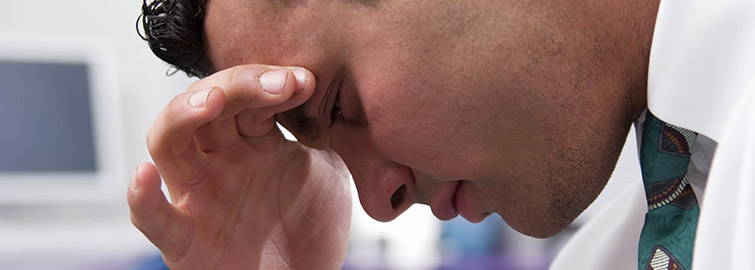
Headaches
Headaches can have a large impact on your day to day life. Although there are over 300 causes of headache, those arising from sensitised structures in the neck account for between 4% to 22% of all headaches seen clinically (Racicki et al 2013; Watson 2014). This type of headache is called “cervicogenic headache” and is often caused by a joint mobility or postural loading issue.
Pain can originate from a number of structures within your neck including the C1-C3 joints, C2/3 disc, neural tissue and musculature. These pain generating structures provide input into an area of your brain that is then interpreted as a headache.
The pain can be one sided or bilateral, and can begin as intermittent and progress into a more constant pain. The pain may start at the back of the head, an area known as the “occipital region” and radiate to the front of your head. It could be provoked by neck movement, sustained postures, stomach sleeping, or sleeping with head to one side.
Neck dysfunction leading to headache can occur due to a variety of issues including joint stiffness, poor muscle control and posture or strength leading to abnormal or uneven loading of the joints, even staying in one posture no matter how optimal can create abnormal joint loading.
Commonly, people suffering a cervicogenic headache will notice tenderness at the base of their skull and top of their neck. There can be mild stiffness or loss of movement however in some people this is subtle and will be detected by your physiotherapist. Neck pain and headache can often be accompanied by dizziness which occurs with general head movements and when remaining in one posture for too long. As there are many causes of dizziness a diagnosis of cervicogenic dizziness is only made after other causes of dizziness have been ruled out.
Unfortunately X-rays, CT-scans and MRI's are not diagnostic of a neck headache. You can suffer a neck headache with or without some abnormal findings on X-rays or scans. It is best to have a thorough assessment with your physiotherapist to determine if your headache is of a cervicogenic origin. Depending on the severity and underlying causes, most headaches can be resolved within a few days to a few weeks.
Treatment generally involves part or all of the following:
- Stiff neck joints may need to be loosened via gentle joint mobilisation
- You may require specific deep neck muscle strengthening exercises to stabilise, control the joint movement available and improve neck position
- Tight or overactive muscles may require stretching, massage or dry needling
- Your shoulder blade, shoulder and neck muscles may be weak and require strengthening
- Posture correction via taping techniques can help you to maintain and learn a more ideal posture
- Advice on correct sitting/ standing posture and ergonomic workplace setup may be helpful to avoid future recurrences





